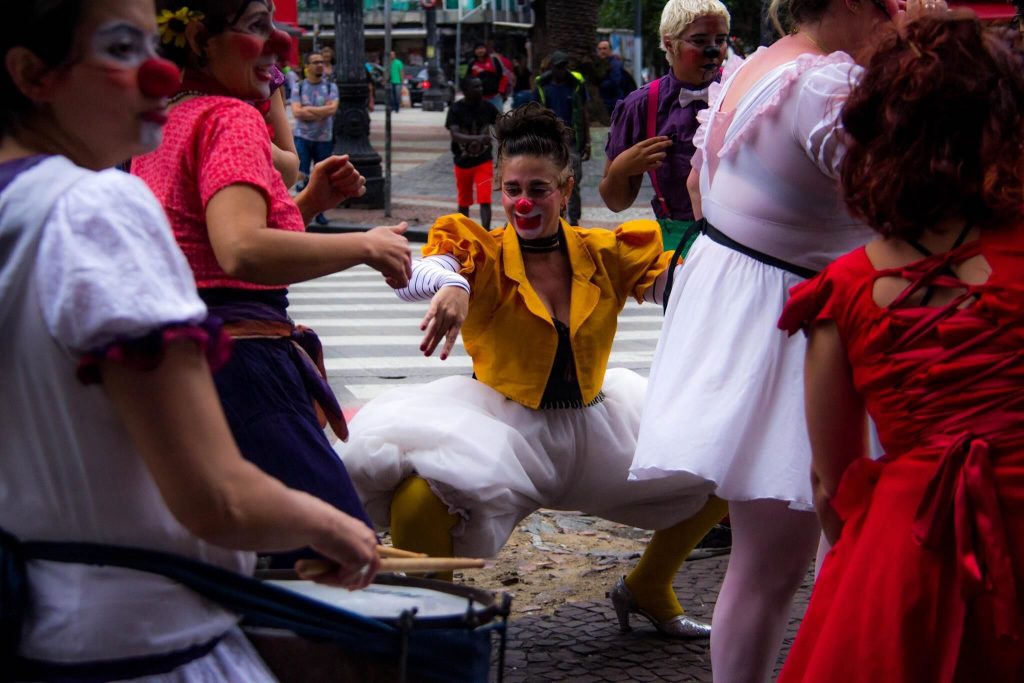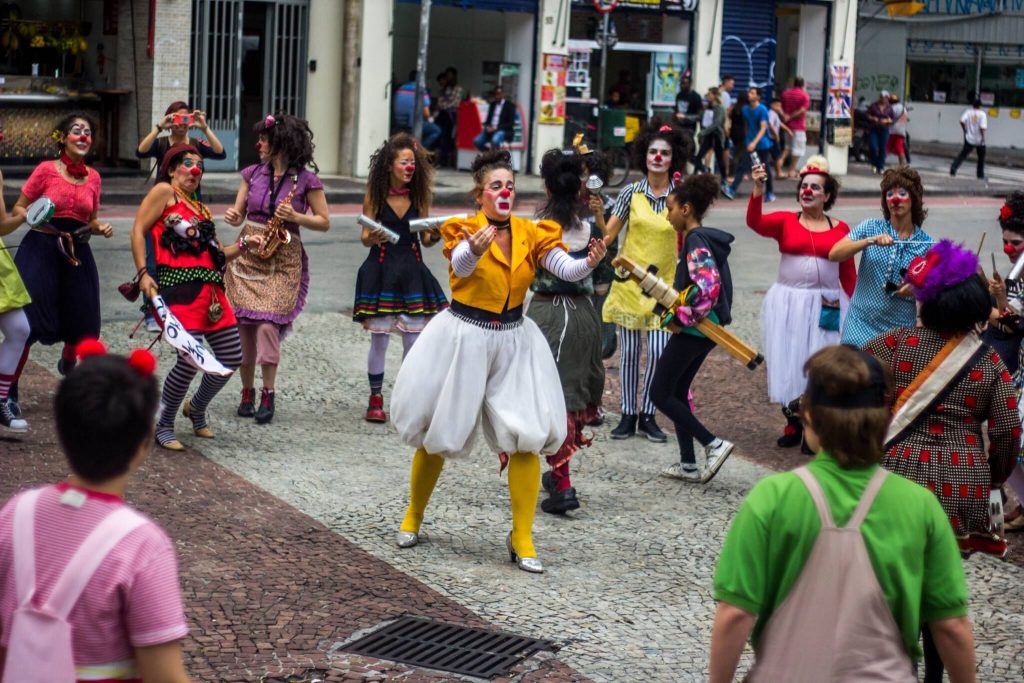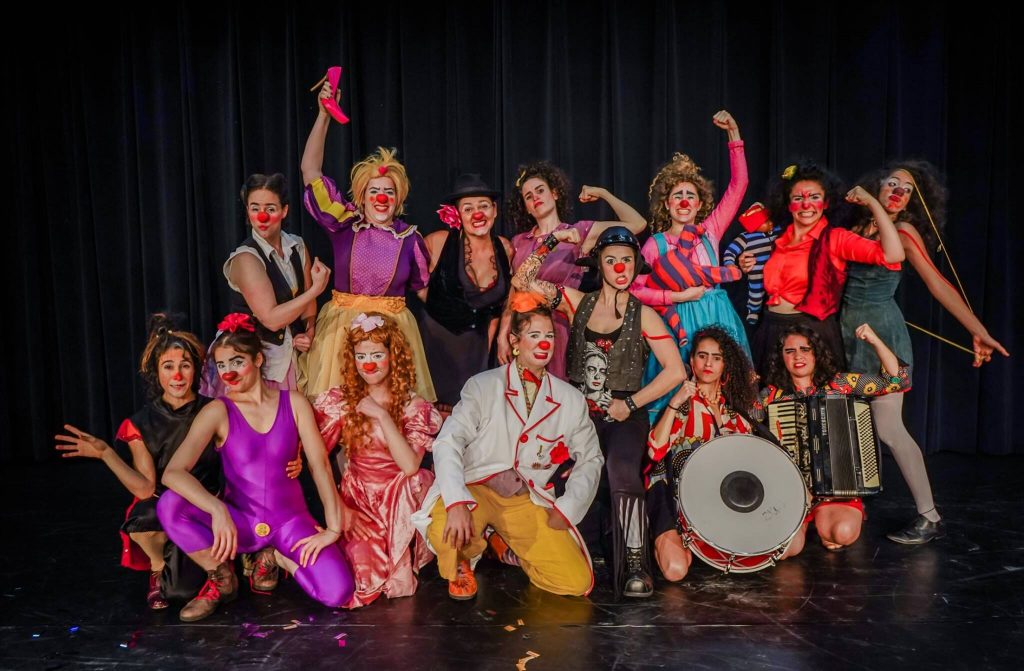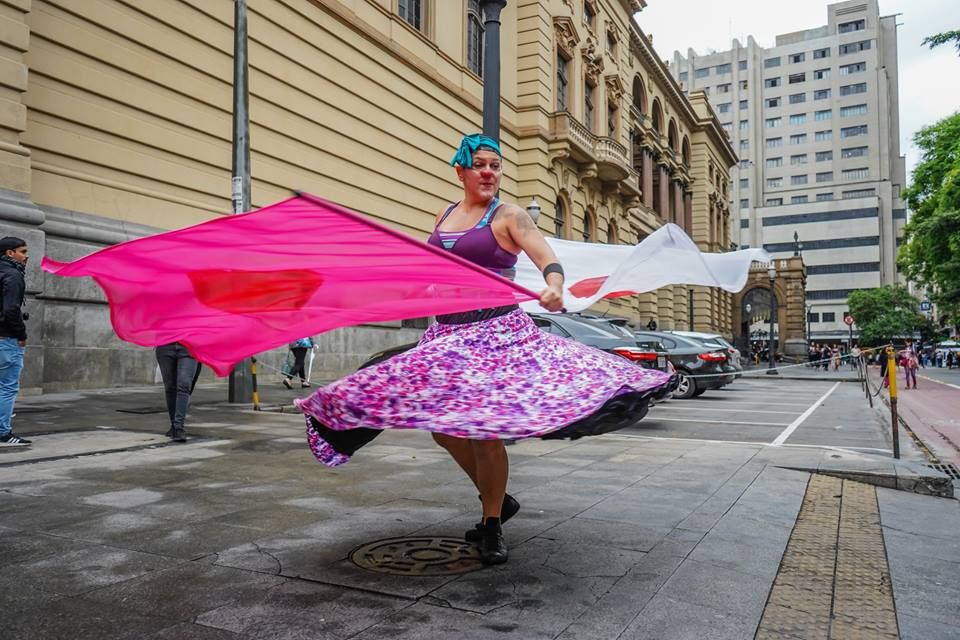SÃO PAULO, BRAZIL – “Grandma” was the best known and most beloved clown in New York’s prize-winning Big Apple Circus. With a grey curly wig, a string of beads, and a lumpy red dress, she was someone special to audiences of millions.
But she wasn’t a she: she was a he, Barry Lubin, a clown who spent years refining the character and became a good friend when this gringo worked with that circus. Reflecting on it, Grandma could just as well have been a woman – most grandmas are.

Perhaps I’m dim, but the question of Grandma’s real gender was something to which I never gave a moment’s thought. Not until I read about the 5º Encontro de Mulheres Palhaças to be held here in São Paulo, from 2 – 9 November, did I ever wonder why, despite my love of the circus, I had never seen a female clown.
Comediennes, yes: wire walkers, trapeze artists, even lion tamers; but never a female clown.
Although not in profusion, female clowns have existed for a long time. According to Dana Fradon, in ‘King’s Fool’, “In medieval days buffoonery was one of the few professions open to women.”
There were also some female clowns in the 18th century but only relatively few, mostly members of circus families, helping out in the family business.
Giulia Nina, one of the clowns who will be performing in this festival, says that she just “couldn’t help becoming a clown.”

Remembering that the former circus owners in Brazil were very conservative, and found all kinds of reasons not to employ female clowns, she explains that one reason was that the audience didn’t know they were looking at women and when they took their bows, the audience was confused.
Also, she says, many of the traditional clown sketches were sexist, something women clowns were not particularly suited for. “All that”, she says happily, “is changing.”
The best argument why female clowns are a relatively recent addition, though, seems to be that women were not allowed in Elizabethan times to appear on stage (remember the wonderful film: ‘Shakespeare in Love’), because covering themselves with outlandish makeup and costumes would have rendered them not the lovely creatures they were popularly supposed to be.

Derived from the medieval court jesters whose antics provided both comic relief and often a satire on the staid formality of royal courts, clowns emerged, and each took on personas that fell into three types (with a million variations).
The most direct descendants from the commedia dell’arte of the 16th to 18th century are the clowns “with the pretty white face and the almost aristocratic bearing”; the tramp with his bindle (“blanket stick”) — so sad, never catching a break; and finally, the everyman with the oversize shoes, who trips and causes the man on the ladder to fall into a tub of water.
Each type, Whiteface, Tramp and the ‘Auguste’ (fool) “has its own history, its own set of clown characteristics, and a typical look”.
The explosion of female clowns, although a relatively recent phenomenon, is the core theme of this ‘Encontro’ entitled “International Meeting of Clown Women in São Paulo” (Encontro Internacional de Mulheres Palhaças em São Paulo), strongly encouraged by both the performance aspects of the week’s activities and by round tables and other meetings designed to enhance the understanding and growth of the profession.
58 female clowns are attending, among Brazilians and visitors from Uruguay, Ecuador, and Argentina. The choice of theme, ‘Riso Latino’ (“Latin Laugh”) makes it clear that this trend goes well beyond Brazil, “addressing Latin comicity, tracing a scenario of what is being produced by artists in the region” according to Andrea Macera, one of the organizers.

Say the organizers:
…there will be presentations of shows of national and international antics; numbers of female clowning in three different categories of cabarets: Cabaret gala, with consecrated antics; CabariX, with clowns and clowns, comic and comical that bring the diversity of the genres expressed in the body and scene and Cabaret of clowns, brings together antics of up to 15 years of road.
There is also the Street Stage that brings together women whose focus of work is performance in the street, and the Cortejo de Rua, a kind of a march with all the clowns participating.
The organizers promise “2 shows, 3 Cabarets, 1 open stage in downtown São Paulo, 2 workshops, 1 street procession,” all free and accessible on their Facebook page.
Where the discipline and joy of clowning by women as demonstrated in performance ends, and where the use of the ‘Encontro’ as an activist, feminist demonstration challenging the overwhelming majority of male clowns begins, is hard to discern.

And does it matter? Says Andrea: “The idea of the event, more than promoting, is to empower artists as well.”
As audience, we have a week of opportunity to judge how they are doing and even see where the next Grandmas are coming from.
(Originally published in Portuguese in SãoPauloSao)

